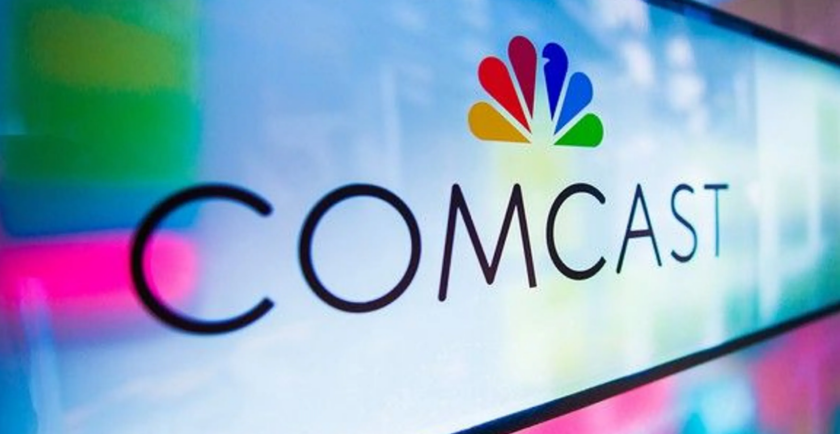M+E Connections

Analysts: Peacock Holds Promise for Comcast
Story Highlights
Comcast’s upcoming Peacock streaming service, along with the broadcasting rights it has for the 2020 Summer Olympics in Tokyo and its high-margin and growing data business all present promise for the company, analysts said Jan. 23, after Comcast reported results for its fourth quarter of 2019 (ended Dec. 31).
The “good news” for Comcast includes the “compelling Peacock service” it’s introducing this year to meet growing direct-to-consumer (DTC) streaming content demand, Pivotal Research Group analyst Jeffrey Wlodarczak said in a research note. He pointed to Comcast’s “high margin data product (that just beat expectations substantially yet again)” as another main positive for the company, noting that helps “offset likely continued weakness in lower margin video even at NBC.”
Comcast’s new Peacock service “will indeed be beautiful,” according to Craig Moffett, a partner and senior analyst at MoffettNathanson. “But it will be costly,” he warned in a research note.
Peacock and its “peer DTC streaming services,” including Apple TV Plus and Disney Plus, “will accelerate the erosion of the legacy media ecosystem from which they are born,” Moffett predicted.
“It was a good presentation” by Comcast at an investor meeting in New York Jan. 16, where it announced details of Peacock, he wrote. There, Comcast said it will launch Peacock April 15 for current Comcast subscribers and July 15 for other consumers in multiple free, ad-supported and pay subscription tier options.
What stands to help is that Comcast’s NBCUniversal division “does, indeed, have a wonderful array of content – not least of which is the upcoming Tokyo Olympics – with which to jump start their new streaming service,” Moffett said. However, he predicted the service is “not going to be much more than a side show for the next few years.”
Comcast, meanwhile, is seeing strong initial results for its Xfinity Flex 4K-capable set-top boxes that enables users to search across multiple streaming services for what to view and manage their connected home devices right on the TV, according to Comcast.
The company “leveraged X1 to launch our newest service Flex to better serve the segment of our broadband customers that prefer streaming only,” Comcast CEO and chairman Brian Roberts said on an earnings call Jan. 23. “Our early results with Flex show that our customers love it,” he said, adding: “In our first month, we could not keep enough inventory and stock and we’re deploying Flex as fast as we can.”
Later on the call, Robert explained: “If you imagine a television show where 70 percent of the viewing comes from some place other than linear television, what Peacock is designed to do is to go after that 70 percent, get it on our platform in a place where we’re ad-supported and we get 100 percent of the ad revenue. That’s the intent. And if you look at it from that perspective, I think Peacock is going to be very good for our company. We’re going to make more money from the television ecosystem and that will allow us to continue to invest in the linear platform. So if I were talking to an affiliate, if I were talking to a cable company, I would say Peacock is a way to make us a better, stronger competitor in a way that’s good for all of our businesses, not just streaming.”
The “Flex and Peacock combination just shows how uniquely positioned we are for streaming,” according to David Watson, president and CEO of Comcast Cable. “Flex is going to help fuel broadband over time,” he said, adding it “opens up other opportunities, whether it’s app participation or advertising.”
If you factor in Comcast’s broadband business and add Flex and Peacock, “I think our company is better positioned as the world moves to streaming than any other company in the world,” according to CFO Mike Cavanagh. “I think you could argue, in the next 10 or 20 years, if you look at all those three businesses combined, we could make more money in streaming than anyone else by a lot,” he said.
Noting the entry level version of Peacock, with about 7,500 hours, is “free for anyone,” Cavanagh also pointed to the 15,000-hour version of Peacock that costs $5 and, “if you’re not a member of a participating cable or satellite company, that provides multi-channel video,” he said. “That universe is still about 80 percent” of U.S. viewers, so “80 percent of the people in America, I think eventually, are going to be able to get that $5 product for free,” he told analysts, predicting that, “by the end of this year, you’re going to see the $5 Peacock product be offered for free to a lot of cable and satellite customers.”
Comcast reported total Q4 revenue inched up 2% from a year ago to $28.4 billion. Profit attributable to Comcast increased 25.9% to $3.2 billion, while earnings per share jumped 23.6% to 68 cents. In Cable Communications, revenue from high-speed Internet grew 8.8% to $4.8 billion, while wireless revenue soared 39.4% to $372 million and business services revenue increased 8.8% to $2 billion. Video, voice and ad revenue were all down – 1.2%, 3.6% and 19.1%, respectively.
Despite losing 149,00 video customers and 2,000 voice customers in Q4, Comcast added 442,000 high-speed Internet customers and 10,000 security and automation customers, it said.
Total Q4 Comcast film revenue, meanwhile, fell 21% to $1.6 billion, with theatrical revenue tumbling 59.1%, “reflecting the volume and strength of releases in last year’s fourth quarter,” which it noted included “The Grinch” and “Halloween.” This past Q4, however, was hurt by the box office bomb “Cats.”









